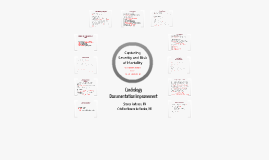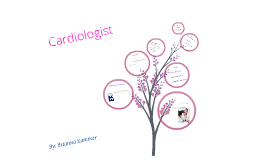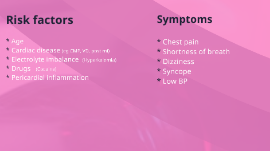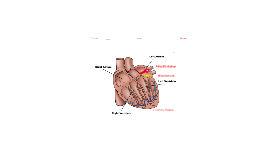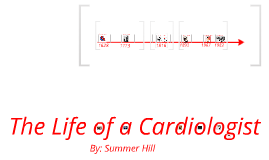cardiology
Transcript: Thanks for your attention References ROC Curve r = -0.518 p = 0.003 MS에서 A fib까지 55mm p=0.04 p = 0.663 Results 65% (cc) image by anemoneprojectors on Flickr Statistical Analysis SPSS(version 19.0 SPSS Inc., Illinois, USA) Mean ± standard deviation 상관 분석은 피어슨 상관계수를 이용 P<0.05 인 경우 통계학적으로 유의한 것으로 판정 Limitation (cc) image by anemoneprojectors on Flickr Introduction p= 0.03 Mitral stenosis 80% Atrial fibrillation 각 그룹 별 LVEDD 관계 Introduction p= 0.161 Only MS 군에서 LVEDD/LADap와 DT의 관계 시간적으로 추적하지 못해 임상적 경과와 오차가 존재 다른 이완기능(EE’)이 누락된 환자가 많아서 더 좋은 이완기능 평가가 힘들었다 ROC Curve Limitation p = 0.02 승모판 협착증 환자에서 좌심실 이완기말 지름과 좌심방 전후 지름비와 그 합병증인 심방 세동과의 관계 p= 0.891 5+7= Conclusion Methods 한국 심초음파 학회: 임상심초음파학 제2판:2008,103P p= 0.936 (cc) image by anemoneprojectors on Flickr 민감도 김재원 sea8751626@hanmail.net p= 0.000 Summary AGENDA LLR와 DT의 관계 LLR과 TDI 비교 좌심방의 절대적인 크기였던 55mm 보다 본 연구에서 제시한 LVEDD/LADap 비율이 더 합리적이다. LVEDD/LADap 또한 좌심실의 기능과 연관이 있다. p = 0.03 p=0.726 Ratio of left ventricular end diastolic diameter to left atrial anteroposterior diameter is associated with atrial fibrillation in rheumatic mitral stenosis patients 특이도 p= 0.150 각 그룹 별 LVEF의 관계 MS with A fib 군에서 LVEDD/LADap와 LVEF의 관계 p= 0.000 Background 기존의 55mm 70% Subject 1. 환자 군 2003년 5월 부터 2012 5월까지 영남대학교 의료원 순환기 내과에 방문한 284명을 대상으로 함 2. 선정 기준 - 승모판 협착증을 갖고 있는 사람 승모판 협착증에 동반된 심방세동을 갖고 있는 사람 심방 세동만 갖고 있는 사람 연구 참가에 동의한 사람 3. 배제 기준 - 기저 심질환이 있는 환자: 심근경색, 협심증, 부정맥,고혈압 기저 내분비계 질환자: 당뇨병, 갑상선기능항진증 Participant characteristics p=0.000 Study design(1) 284명의 경 흉부 초음파를 시행한 환자를 대상으로 LVEDD,LADap,TDI,DT,LVEF등을 측정한 뒤 MS만 있는 군 MS와 심방 세동이 같이 존재하는 군 기저 질환 없이 심방 세동만 존재 하는 군 LVEDD/LADap Ratio 각 그룹별 LADap 관계 큰 집단을 이용한 민감도 예민도 연구가 필요 심방 세동과 좌심실의 관계에 대한 연구 환자를 선정하여 추적 관찰하는 연구 각 그룹 별 LLR 관계 Summary p= 0.067 r = -0.351 p= 0.011 1.Wolf PA,Daw TR, Thomas HE Jr, Kannel WB: Epidemiologic assessment of chronic atrial fibrillation and risk of stroke: the Framingham study.Neurology 1978;28(10):973-977 2.Roberts WC, Virmani R: Aschoff bodies at necropsy in valvular heart disease.Evidence from an analysis of 543 patients over 14 years of age that rheumatic heart disease, at least anatomically, is a disease of the mitral valve. Circulation 1978;57(4):803-807 3.Virmani R,Roberts WC:Aschoff bodies in operatively excised atrial appendages and in papillary muscles. Frequency and clinical significance.Circulation 1956;55(4):559-563 4.Pan M, Medina A, Suárez de Lezo J, et al:Factors determining late success after mitral balloon valvulotomy. Am J Cardiol 1993;71(13);1181-1185 5.Moreyra AE, Wilson AC, Deac R, et al:Factors associated with atrial fibrillation in patients with mitral stenosis: a cardiac catheterization study. Am heart J 1998;135(1):138-145 6.Aberg H.Atrial fibrillation. I. A study of atrial thrombosis and systemic embolism in a necropsy material. Acta Med Scand 1969;185(5):373-379 7.Stojnić BB, Radjen GS, Perisić NJ, Pavlović PB, Stosić JJ, Prcović M.:Pulmonary venous flow pattern studied by transoesophageal pulsed Doppler echocardiography in mitral stenosis in sinus rhythm: effect of atrial systole. Eur Heart J 1993;14(12):1597-1601 8.최윤식,이영우,제 2판 순환기학.일조각,2010,558P 9.심초음파 소위원회,박승우외: 한국인에서의 정상 심초음파 검사치의 확립에 관한 다기관연구 순환기 2000;30:373-82 10.Abhayaratna WP, Seward JB, Appleton CP, Douglas PS, Oh JK, Tajik AJ, Tsang TS.Left atrial size: physiologic determinants and clinical applications.J Am Coll Cardiol. 2006 Jun 20;47(12):2357-63. 11.Valocik G, Mitro P,Druzbacka L, Valocikova I. Left atrial volume as a predictor of heart function; Bratisl L Listy 2009;110(3)146-151 12.Jacob E. Møller, MD, PhD; Graham S. Hillis, MBChB, PhD.Left Atrial VolumeA Powerful Predictor of Survival After Acute Myocardial Infarction;Circulation 2003;107:2207-2212. 13.한국 심초음파 학회: 임상심초음파학 제2판:2008,103P. 14.Thamilarasan M, Klein AL. Factors relating to left atrial enlargement in atrial fibrillation: ‘chicken or the egg’ hypothesis. Am Heart J 1999; 137:381–383. p= 0.002 Braunwald’s heart disease 9th Left ventricle end diastole diameter / Left atrial anterior to posterior diameter ratio seems to be associate with the development of A fib in patients with MS (1.00± 0.14 vs 0.94± 0.12 p value 0.02) Left ventricle function also associate MS. Introduction Methods Results Conclusion http://www.cybermedk.com/MedicalInfo/Index.asp?Action=View&Gubun=topic&Mcheck=&Mform=&AccessKind=&AccessCode=&Idx=1007&Page=27 ROC Curve Conclusion 40% Introduction p= 0.078 p= 0.943 Future work 기존의 55mm The Routine use of warfarin in patients in sinus rhyrhm with LA enlargement (maximal dimension >5.5cm) with or without apontaneous echo contrast is more controversial. Harrison 18th edition Methods 김재원, 김웅, 박종선 영남대학교 의과대학 의학전문대학원 심장순환기 교실 Left ventricle end diastolic diameter/ Left atrium diameter anterior posterior Anticoagulation also may be considered for patients with severe MS and sinus rhythm when there is severe severe left atrial enlargement(55mm) 5+7= Background 승모판 협착증 p= 0.893 LVEDD/LADap Ratio Future work 65% 50% 20% 30% 기존의 55mm LVEDD/LADap Ratio 특이도








